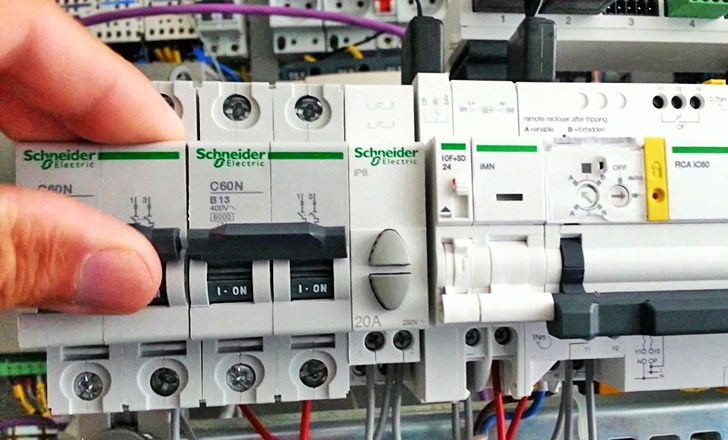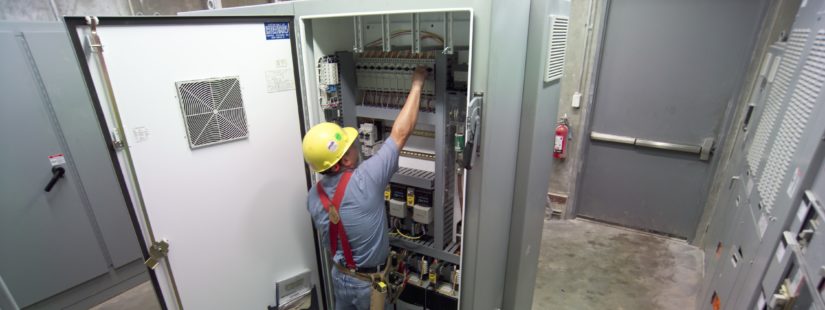Electrical Installation Guide
According to IEC International Standards
The Electrical Installation Guide is a single document covering the techniques, regulations and standards related to electrical installations. It is intended for electrical professionals in companies, design offices, inspection organisations, etc.
This Technical Guide is aimed at professional users and is only intended to provide them guidelines for the defnition of an industrial, tertiary or domestic electrical installation. Information and guidelines contained in this Guide are provided AS IS.
The purpose of this guide is to facilitate the implementation of International installation standards for designers and contractors, but in all cases the original text of International or local standards in force shall prevail.
This new edition has been published to take into account changes in techniques, standards and regulations, in particular electrical installation standard IEC 60364.We thank all the readers of the previous edition of this guide for their comments that have helped improve the current edition.
What’s new in version 2015
Updated list of relevant IEC standards.
For example, the new standard IEC60364-8-1 “Low-voltage electrical installations – Part 8-1: Energy efficiency” published in October 2014
New content about LED lighting: characteristics and particular constraints of LED luminaires, selection tables to choose the proper circuit-breakers and relays
New content about Arc Fault Detection Devices (AFDD), as defined by new IEC 62606 (2013) and updated IEC60364-4-42 (November 2014)
“Connection to the MV utility distribution network” chapter completely re-written and updated, with more detailed information about protection in electrical installations, including the introduction of service continuity classes.
“MV and LV architecture selection guide for buildings” chapter partly re-written and including a description of the barycentre method, recommended by the new IEC 60364-8-1, to select the optimal location for the transformers and switchboards
New content about the selection of busways (busbar trunking systems) in presence of harmonics
Updated Energy Management architectures
This guide has been written for electrical Engineers who have to design, realize, inspect or maintain electrical installations in compliance with international Standards of the International Electrotechnical Commission (IEC).
Complete study
The aim of the present guide is to provide a clear, practical and step-by-step explanation for the complete study of an electrical installation, according to IEC 60364 and other relevant IEC Standards.

Electrical Installation Guide
Do you often work on low voltage electrical installations? Are you part of electrical engineering projects as a consultant, designer, contractor, panel builder or facility manager? Then keeping up with the IEC standards might be an everyday struggle for you all.
These experts accepted to share everything they know about complying with evolving standards and technologies while working on electrical installations. You’ll find precious information however if you work for industrial, commercial or domestic electrical projects.
the Electrical Installation Guide covers every important topic related to electrical installation; from MV/LV substations to voltage drop, from electrical safety to power factor correction, from electrical design to cable sizing, from electrical calculations to earthing schemes, from circuit breakers to electrical protection, from overvoltage protection to harmonics and more.
Brand new content about Photovoltaic for self-consumptionSolar technology is getting bigger and bigger around the world and you can find more and more photovoltaic systems installed on top of buildings to try and reach the “zero energy” target. Many of you wonder how to design, install or operate these photovoltaic systems, especially in the new typical installation trend where PV systems (or other local production sources) are exclusively used for self-consumption.
Along with these 2 new major features, you’ll find great information about LV Switchgear function and selection, Energy Efficiency in electrical distribution, Sizing and protection of conductors, Overvoltage protection, Internal arc withstand tests, LED lamps for public lighting and also Measurement standards updates. No to mention the new look&feel, improved illustrations, internationalized content and more
Electrical Installation Practice
Electrical Installation Practice covers all key aspects of industrial, commercial and domestic installations and draws on the expertise of a wide range of industrial experts. Chapters are devoted to topics such as wiring cables, mains and submains cables and distribution in buildings, as well as power supplies, transformers, switchgear, and electricity on construction sites. Standards and codes of practice, as well as safety, are also included.
there have been many developments in technology and standards. The revolution in electronic microtechnology has made it possible to introduce more complex technologies in protective equipment and control systems, and these have been addressed in the new edition.
Developments in lighting design continue, and extra-low voltage luminaries for display and feature illumination are now dealt with, as is the important subject of security lighting.
All chapters have been amended to take account of revisions and other standards, following the trend to harmonised European and international standards, and they also take account of the latest edition of the Wiring Regulations.
Electrical Installation Guide
The Electrical Installation Guide is written for electrical professionals who must design, install, inspect, and maintain low-voltage electrical installations in compliance with the standards published by the International Electrotechnical Commission (IEC).
Which technical solution will guarantee that all relevant safety rules are met? Answering this question has always been integral to the creation of this document. The guide is meant for all electrical professionals including consulting engineers, designers, contractors, panel builders, facility managers, electrical engineering students and teachers, as well as people involved in standardization, certification, or inspection of these electrical installations.
Electrical Installation Guide
General Contents of Electrical Installation Guide
General rules of electrical installation design.
Connection to the MV utility distribution network.
Connection to the LV utility distribution network.
MV & LV architecture selection guide.
LV Distribution.
Protection against electric shocks.
Sizing and protection of conductors.
LV switchgear: functions & selection.
Overvoltage protection.
Energy Efficiency in electrical distribution.
Power Factor Correction.
Harmonic management.
Characteristics of particular sources and loads.
Photovoltaic installations.
Residential and other special locations.
EMC guidelines.
Preface to Electrical Installation Guide
The task of the IEC Technical Committee 64 is to develop and keep up-todate requirements – for the protection of persons against electrical shock, and – for the design, verification and implementation of low voltage electrical installations.
Series of standard such as IEC 60364 developed by IEC TC64 is considered by the international community as the basis of the majority of national low-voltage wiring rules. IEC 60364 series is mainly focussed on safety due the use of electricity by people who may not be aware of risk resulting from the use of electricity.
But modern electrical installations are increasingly complex, due to external input such as – electromagnetic disturbances – energy efficiency – … Consequently, designers, installers and consumers need guidance on the selection and installation of electrical equipment.
It is based on IEC TC64 standards such as IEC 60364 series and provides additional information in order to help designers, contractors and controllers for implementing correct low-voltage electrical installations.
This guide has been written for electrical Engineers who have to design, select electrical equipment, install these equipment and, inspect or maintain low-voltage electrical installations in compliance with international Standards of the International Electrotechnical Commission (IEC).
“Which technical solution will guarantee that all relevant safety rules are met?” This question has been a permanent guideline for the elaboration of this document.
